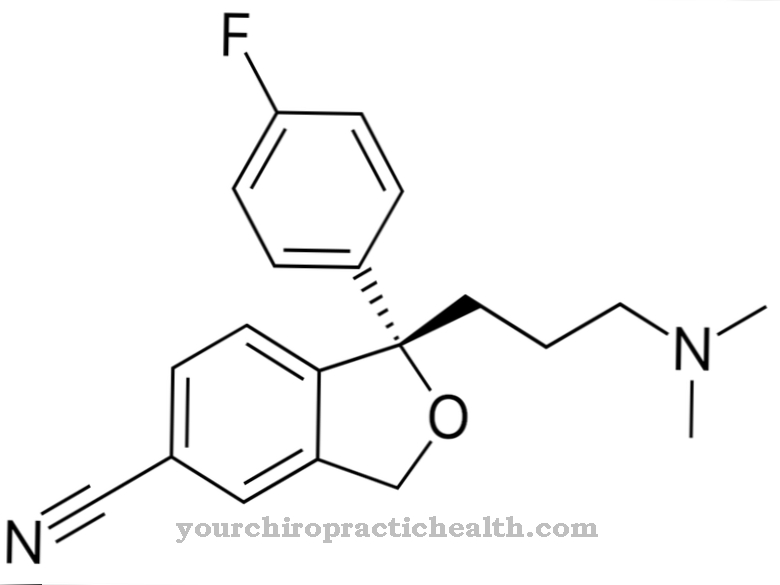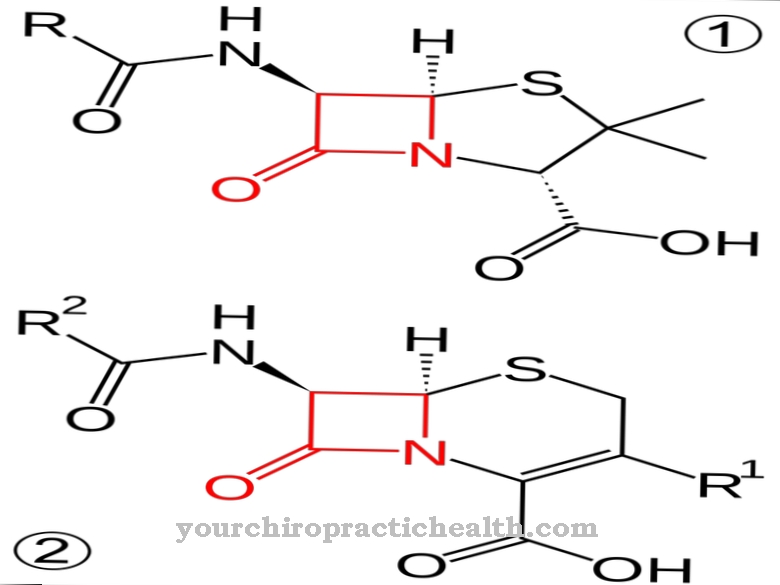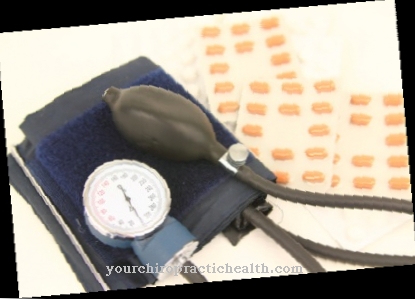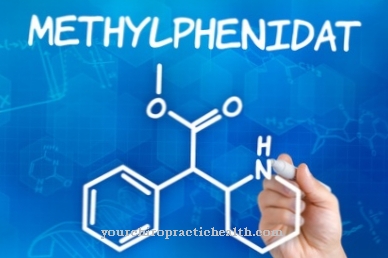Clofibrate is a descendant of clofibric acid and belongs to the group of active substances of lipid-lowering agents along with statins and nicotinic acids. Above all, clofibrate lowers an increased plasma level of triglycerides, the cholesterol-lowering effect is less pronounced.
What is clofibrate?
Clofibrate (chemical name: ethyl 2- (4-chlorophenoxy) -2-methylpropanoate) belongs to the group of fibrates, a group of drugs that is mainly used for drug therapy of elevated blood lipids. In contrast to statins, which are used to treat elevated cholesterol levels, fibrates are also used to treat elevated triglycerides. This is also where the main effect of fibrates lies. It is therefore an important drug for the treatment of disturbed blood lipids and for the prevention of cardiovascular diseases.
Clofibrate is a white, crystalline, insoluble powder that is taken daily in the form of tablets or capsules. Clofibrate is broken down by first being converted into clofibric acid and then excreted via the kidneys, which is why the dose has to be adjusted if the kidneys are damaged.
Due to the increased side effects, clofibrate is now rarely used and is no longer commercially available in Germany.
Pharmacological effect on the body and organs
Clofibrate reduces the plasma level of triglycerides. The exact mechanism of action is not yet fully explained. It is considered likely that clofibrate activates the so-called PPARα (peroxisome proliferator activated receptor). It is a protein which, when activated, binds to the DNA and thus leads to an increased breakdown of LDL cholesterol (10-25%) and an increase in HDL cholesterol (approx. 10%). LDL is the colloquial "bad" cholesterol, which tends to be deposited on the vessel walls and thus leads to atherosclerosis. Meanwhile, the HDL is the so-called "good" cholesterol, which is transported to the liver and is broken down there.
Another effect of clofibrate is the impaired formation of cholesterol in the liver and a reduced release of VLDL from the liver. VLDL, like LDL, transports cholesterol formed in the liver from the liver to other organs; in contrast to LDL, it consists more of triglycerides and is thus involved in atherosclerotic processes.
In addition, clofibrate increases the activity of the enzyme lipoprotein lipase, which is important for breaking down triglycerides. Similar to statins, pleiotropic effects are also observed with clofibrate, i.e. different effects are produced on different target structures. This includes a reduced formation of inflammatory proteins as well as an improved vascular wall function and the inflammatory change in these due to atherosclerotic processes.
One negative effect of clofibrate is the increased excretion of cholesterol in the bile, which increases the risk of cholesterol-containing gallstones.
Medical application & use for treatment & prevention
Clofibrate and other fibrates are mainly used in primary familial hypertriglyceridemia. This is a metabolic disorder in which there is unphysiologically high levels of triglycerides in the blood. It is called 'primarily familial' because it is an inborn excess of triglycerides. Usually the cause is a defect in an enzyme, which is important for breaking down triglycerides.
But also in addition to the familial form of hypertriglyceridemia, clofibrate is used in the secondary form, i.e. in the acquired form. This can have various causes, such as poor nutrition (obesity, anorexia), metabolic disorders (e.g. diabetes mellitus), and kidney diseases such as nephrotic syndrome or kidney failure.
Misuse of medication can also be the cause of secondary hypertriglyceridemia and thus represent an indication for lipid-lowering drugs. Such drugs that cause increased plasma levels of blood lipids include beta blockers, cortisone or some hormones.
Clofibrate can also be used in so-called metabolic syndrome, also known as "Syndrome X" or the "fatal quartet". This is a dangerous combination of impaired sugar metabolism, increased blood pressure, an increased proportion of triglycerides with the simultaneous presence of low HDL cholesterol and severe obesity.
Clofibrate is a whitish, crystalline powder that the patient must take in the form of tablets and capsules several times a day. However, since it was taken off the market in Germany due to increased side effects, other fibrates such as bezafibrate or fenofibrate are prescribed, which are also (like clofibrate) derivatives of clofibric acid.
Risks & side effects
Clofibrate has a wide range of side effects. Non-specific side effects include allergic reactions to the drug, which are characterized by swelling, difficulty breathing and hives.
Other side effects include fever and chills, a flu-like feeling, swelling of the legs and ankles, as well as joint pain, impotence, headache, dizziness and lightheadedness and sudden weight gain.
More specific side effects that are typical of fibrate therapy are muscle cramps, muscle pain and muscle weakness due to rhabdomyolysis (in English: muscle breakdown). Combination therapy with statins should therefore be carefully considered and monitored, as these also cause muscle breakdown.
Clofibrate also causes gastrointestinal problems such as nausea, vomiting and diarrhea. Clofibrate also increases the risk of gallstones. Under no circumstances should clofibrate be taken in the case of liver and gallbladder diseases, kidney weakness, pregnancy or breastfeeding.
























.jpg)



